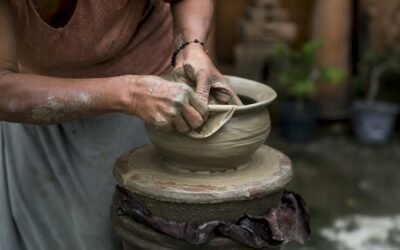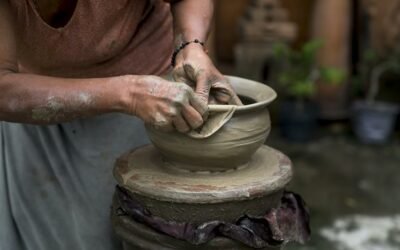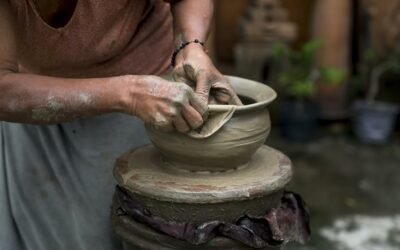Do you use African black soap? Have you noticed any mold growth on it?
In this article, we will explore the composition of African black soap and the factors that can lead to mold growth.
You will learn how to identify mold in your soap and discover effective ways to prevent it.
Proper storage and handling techniques will also be discussed to help you maintain the quality and longevity of your African black soap.
Key Takeaways
- Excessive moisture and high humidity can lead to mold growth in African Black Soap.
- Proper storage in a dry and well-ventilated area is crucial to prevent mold.
- Mold can be identified by visible signs of discoloration, unusual spots, or a musty odor.
- To prevent mold growth, store the soap in a cool, dry place, use a soap dish with drainage, and regularly inspect the soap for any signs of mold.
Understanding the Composition of African Black Soap
To understand the composition of African Black Soap, you need to know the key ingredients that make up this traditional cleansing product. African Black Soap is made from natural ingredients that are native to West Africa. The main ingredients include plantain skins, cocoa pods, palm kernel oil, and shea butter. These ingredients are carefully selected for their skin-nourishing properties and are combined using traditional methods.
Plantain skins are rich in vitamins A and E, which help to moisturize and heal the skin. Cocoa pods contain antioxidants that protect the skin from damage caused by free radicals. Palm kernel oil provides deep hydration and helps to maintain the skin's elasticity. Shea butter is known for its moisturizing and anti-inflammatory properties, making it ideal for soothing dry and irritated skin.
The process of making African Black Soap involves drying and burning the plantain skins and cocoa pods, then grinding them into a fine powder. This powder is mixed with palm kernel oil and shea butter, and the mixture is left to cure for several weeks. The result is a dark, rich soap that's gentle yet effective in cleansing and nourishing the skin.
Factors That Can Lead to Mold Growth in African Black Soap
Mold growth in African Black Soap can be caused by various factors. It's important to understand these factors in order to prevent mold from forming and ensure the longevity of your soap. Here are three key factors that can contribute to mold growth in African Black Soap:
- Moisture: Excessive moisture is a common cause of mold growth. When African Black Soap is exposed to high levels of humidity or kept in a damp environment, it becomes a breeding ground for mold. It's crucial to store the soap in a dry and well-ventilated area to prevent moisture buildup.
- Contamination: If the soap comes into contact with contaminants such as dirt, dust, or other organic matter, it increases the chances of mold growth. Ensure that you handle the soap with clean hands and store it in a clean container to minimize the risk of contamination.
- Improper storage: Proper storage is essential to prevent mold growth. If the soap is stored in a sealed container or in a location where air circulation is limited, it creates a favorable environment for mold to thrive. Opt for storing the soap in a breathable container that allows air to circulate freely.
How to Identify Mold in African Black Soap
If you suspect mold in your African Black Soap, look for visible signs of discoloration or unusual spots on the soap's surface. Mold often appears as green, black, or white patches on the soap. It can also cause the soap to develop a musty or unpleasant odor. When examining the soap, pay attention to any changes in texture or consistency. Mold can cause the soap to become slimy or develop a fuzzy texture.
If you notice any of these signs, it's essential to take immediate action to prevent further contamination.
To confirm the presence of mold, you can also perform a simple test. Wet a cotton swab or tissue with water and rub it on the soap's surface. If the swab or tissue turns discolored or shows signs of mold growth, it's a clear indication of contamination.
It is important to note that mold can be harmful to your health, especially if you have allergies or respiratory conditions. If you suspect mold in your African Black Soap, it's advisable to discontinue its use and discard the affected soap. Additionally, it's crucial to thoroughly clean the area where the soap was stored to prevent further mold growth.
To prevent mold growth in African Black Soap, ensure that the soap is stored in a cool, dry place and keep it away from moisture and humidity. Regularly inspect the soap for any signs of discoloration or unusual spots, and if in doubt, it's better to be safe and discard the soap.
Preventing Mold Growth in African Black Soap
To prevent mold growth in your African Black Soap, ensure that you store it in a cool, dry place and keep it away from moisture and humidity. Mold thrives in moist environments, so taking steps to keep your soap dry is essential.
Here are three additional tips to help prevent mold growth in your African Black Soap:
- Use a soap dish with drainage: When storing your soap, make sure to use a soap dish that allows water to drain away. This will prevent the soap from sitting in a pool of water, which can promote mold growth.
- Cut your soap into smaller pieces: If you have a large bar of African Black Soap, consider cutting it into smaller pieces. This will expose less surface area to moisture, reducing the chances of mold growth.
- Keep your soap away from direct sunlight: Sunlight can cause your soap to melt and become soft, creating a more favorable environment for mold. Store your soap in a shady spot, away from direct sunlight, to prevent this from happening.
Proper Storage and Handling of African Black Soap
To ensure the longevity and effectiveness of your African Black Soap, proper storage and handling are essential. By taking the necessary steps to protect your soap, you can ensure that it remains usable for a longer period of time.
Firstly, it's important to store your African Black Soap in a cool, dry place. Excessive heat and humidity can cause the soap to soften and lose its shape. Therefore, it's recommended to keep it away from direct sunlight and moisture. Airtight containers or resealable plastic bags can help maintain the soap's integrity and prevent it from absorbing moisture or odors from its surroundings.
Secondly, always handle the soap with clean, dry hands or a clean utensil. Avoid touching the soap with wet hands, as this can also cause it to soften and become mushy. Additionally, be mindful of the soap's shape and avoid applying excessive pressure or squeezing it tightly, as this can cause it to break or lose its texture.
Lastly, if you have unused portions of the soap, it's best to keep them separate from the main bar to prevent cross-contamination. You can cut the larger bar into smaller pieces and store them individually.
Conclusion
In conclusion, it's important to understand the composition of African black soap and the factors that can lead to mold growth.
By properly identifying mold in African black soap and taking preventive measures, such as proper storage and handling, you can ensure its longevity and effectiveness.
By following these guidelines, you can maintain the quality of your African black soap and continue to enjoy its benefits for your skin.






0 Comments